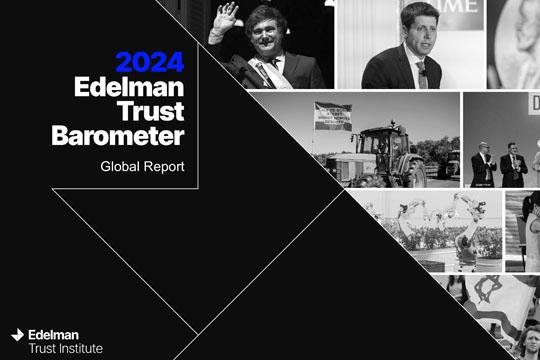- Global (EN)
- Africa (EN)
- Australia (EN)
- Belgium (EN)
- Brasil (PT)
- Canada (EN)
- Canada (FR)
- China (CN)
- France (FR)
- Germany (DE)
- Germany (EN)
- Hong Kong, China (EN)
- India (EN)
- Indonesia (EN)
- Ireland (EN)
- Italy (IT)
- Italy (EN)
- Japan (JP)
- Korea (KR)
- Latin America (ES)
- Malaysia (EN)
- Middle East (EN)
- Netherlands (EN)
- Spain (ES)
- UK (EN)
- Global (EN)
- Africa (EN)
- Australia (EN)
- Belgium (EN)
- Brasil (PT)
- Canada (EN)
- Canada (FR)
- China (CN)
- France (FR)
- Germany (DE)
- Germany (EN)
- Hong Kong, China (EN)
- India (EN)
- Indonesia (EN)
- Ireland (EN)
- Italy (IT)
- Italy (EN)
- Japan (JP)
- Korea (KR)
- Latin America (ES)
- Malaysia (EN)
- Middle East (EN)
- Netherlands (EN)
- Spain (ES)
- UK (EN)
- CEOs are expected to lead in introducing innovations to society at a time when innovation itself is a divisive issue.
- Innovation fault lines are more concerning amid geopolitical uncertainty and anxiety around global challenges.
- Business leaders can take action to repair innovation fault lines that could affect their companies, as well as society.
Chief executives don’t get much sympathy, but it is startling to think how broad their jobs have become. I don’t envy their responsibilities. In reading the 2024 Edelman Trust Barometer, innovation is teetering on the edge of becoming a wedge issue. Respondents distribute blame, but expectations of CEOs are clear and if they press forward without heeding the risks, a fault line today could quickly become a chasm.
By no means is the picture uniform. People feel differently about innovation: The Edelman Trust Barometer finds differences of opinion about the willingness to adopt innovations including AI, gene-based medicine, GMOs and green energy. But that variance is not trivial for business leaders. It should tell you that your enthusiasm for building things for people to buy may be a little out of whack with what they want from you – or at least how you are going about it today. It might appeal to plow forward with your P/E ratio front of mind, but if your innovation pipeline isn’t calibrated against clear measures of whether and why people may resist, problems lie ahead.
We believe this innovation fault line is more concerning because of underlying geopolitical uncertainty. Ian Bremmer, the political scientist, author and expert on geopolitical risk, wrote in January about 2024:

Politically it’s the Voldemort of years. The annus horribilis. The year that must not be named. I’d love to sugarcoat it, but I can’t: From a global political risk perspective, this is the most dangerous and uncertain year I’ve covered in my lifetime.

The innovation fault line exacerbates this anxiety. We are worried about global issues, and we are doubtful about whether leaders can competently do what humankind has for thousands of years, which is to imagine and create new technologies to pursue new opportunities or to get us out of the troubles we discover as our species advances. Not a good mix. Chief executives should be acutely aware of this sentiment because business is the most trusted institution with introducing new technologies and innovations into society.
In the spirit of action, here are seven things for business leaders to consider – in ascending order of effort and impact. Think of them as prompts to map or mitigate fault lines that could affect your future – and ours.
- Empathize. Innovation rejection breaks along political lines in many countries. It is often easy for people to think the “other side” is ill-informed or plain stupid for doubting or trusting a new technology. Doing that causes people to dig into their positions. Stop pointing fingers and instead work hard to understand why a new technology may concern or appeal to others. Then rethink how to engage from their perspective.
- Show Character. The report underscores that business is perceived as the most competent institution, a full 52 points more competent than government, and 32 points more ethical than government. And global problems are worrying more and more people. What are the implications of looking weak if you bend under pressure to focus on money alone? Redouble your personal and leadership commitment to pressing global issues, but first decide which unique skill you have to address and stick to it.
- Elevate Experts. People expect scientists and experts to have a big role in managing the introduction of innovation, but 45 percent say that scientists don’t know how to communicate with people like them. It might be a good idea, given trust headwinds for CEOs, to give the floor to technical experts within your company to express how they are working on new innovations. If you do this, at minimum it will be harder to be accused of ignoring – or hiding – the possible impact of innovation.
- Open Up. If you are creating disruptive technology, show a wide variety of stakeholders the robust ethical guardrails that you and your technical people follow. Ideally, work with a third-party group to develop them, because, anecdotally, trust improves if organizations and leaders accept that they don’t have all the answers.
- Partner. People want to see business and government do more together: Since 2015, the percentage of people who say that they would trust business more with technology-led changes if it partnered with government has surged 15 points – up from 45 to 60 percent. Partnering can be hard and slow work, but meeting this significant latent demand may help increase the number of people who believe that innovation is well-managed.
- Say Stop. If you hear consistent concerns from your people internally or from advocates about moving too fast, consider hitting the brakes. Say that you have heard the concerns and want to dig deeper into them. It takes guts to say no or to change course when you have set a delivery deadline, but the longevity and impact of the innovation will matter more than the initial buzz when you look back in ten years.
- Create an Information Integrity Strategy. Sixty-one percent of respondents worry business leaders are purposely misleading them by saying things that they know are false or gross exaggerations. Board members, C-suite leaders, and anyone who would like to ascend to those levels in the future should be hyper-vigilant about this shocking number. Propose an information integrity strategy for your company that lives at the same altitude as your cybersecurity strategy. It should sit at the intersection of brand, reputation, risk management, growth and impact, governing how you publish data about products, how you communicate about science and innovation – and guide sustainability disclosures. Every board should review and track progress against it. Failing to do so will create real exposure to threats like deep fakes and information campaigns.
Remarkably, today information integrity strategies do not generally exist, but faith in your industry, in your company, in your innovations – and in you – depends on having a clear plan. When perception of your competence, ethics or transparency inevitably falters, you will need to make clear, fact-based decisions. An information integrity strategy will help you not only monitor issues that may destabilize your company, you can also help to make sure that you are not part of making the innovation fault line a chasm.
To close, a quote for those tempted to observe how trust in innovation plays out from the sidelines. Epictetus was an ancient stoic philosopher. He didn’t write texts but is thought to have said,
“Where then do I look for good and evil? Not to uncontrollable externals, but within myself to the choices that are my own.”
Trust is ours to steward and rebuild.
Alex Thompson is global chair of Edelman’s corporate affairs and impact practices. He is the former chief communications officer for Thomson Reuters and previously led brand stewardship & impact for Recreational Equipment, Inc., including government affairs, communications, sustainability, local marketing and philanthropy.




